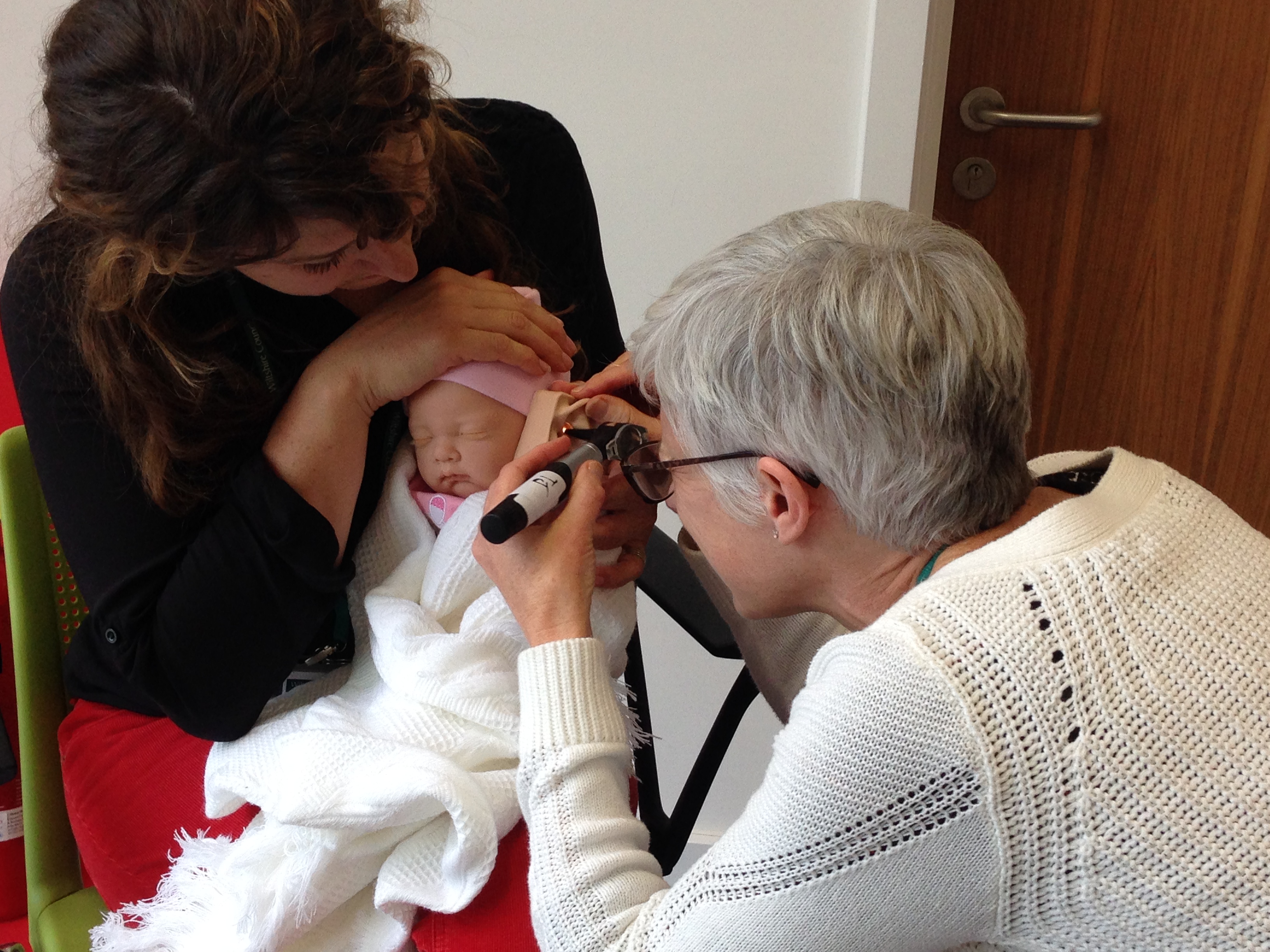There are many anatomical differences between the ears of adults and children. For example, children’s ear canals tend to be narrower and straighter. This means you need to consider the equipment you use, for example the size and width of your syringe and the size of your otostop. As babies’ ear canals grow rapidly in the first year of life, you may need to change your equipment as the baby gets older, so you will need to use your judgement on otoscopy. The best view on otoscopy can be obtained by pulling the ear back only in children, since their ear contains more cartilage than adults. You may not recognise a second bend in a child’s ear so you have to learn to ‘feel’ when you have entered the bony portion of the canal.
A neonate ear canal is much shorter than an adult’s therefore the BSA recommended procedure (2013) recommends you use a 10mm marker as a guide on the otolight for babies under the age of 6 months. A cotton otostop is also recommended since sponge may be more abrasive at this age (BSA 2013).
Perhaps the biggest difference in taking impressions in children is the interaction you need with the caregiver as well as the child. There are a range of brace positions that you can try and are documented in the BSA recommended procedure (2013) to ensure that children of different age groups are safe when carrying out the procedure. You also need to make it fun – lots of toys and distractions to keep those little hands busy while the impression material is setting.
So in summary – a range of different sizes of equipment is needed, a good eye on otoscopy to judge the position of the otostop, consider the right brace position, have lots of toys, fun and patience while remaining calm and informing both parent and child as you go along.
It is recommended that anyone carrying out impressions on children under 5 years are competent, and have sufficient training and experience (BSA 2013). Tracy James is holding a 1-day BSA accredited impression-taking course for children under 5 years in Newbury on the 24th of May (Newbury College). Learn how to take impressions in children safely, for different age groups and experience a range of different types of equipment you can use, and learn more about children’s ear moulds.
Find out about Tracy James and take a look at her website: www.tjaudiology.com for more details regarding her courses, or email tjaudiology@outlook.com.
References: British Society of Audiology (2013). Recommended Procedure (Supplement). Taking an impression: children under 5 years of age.

